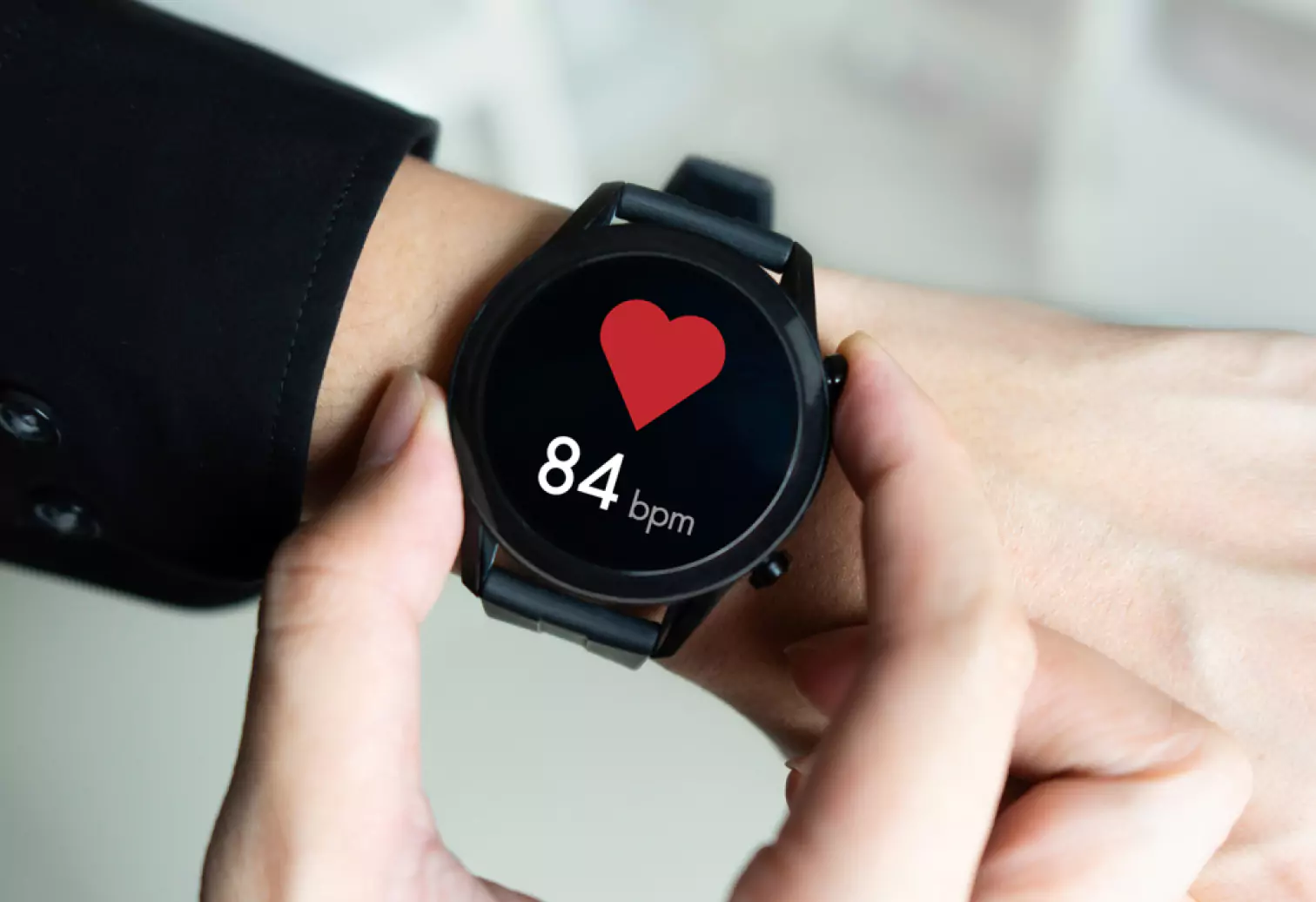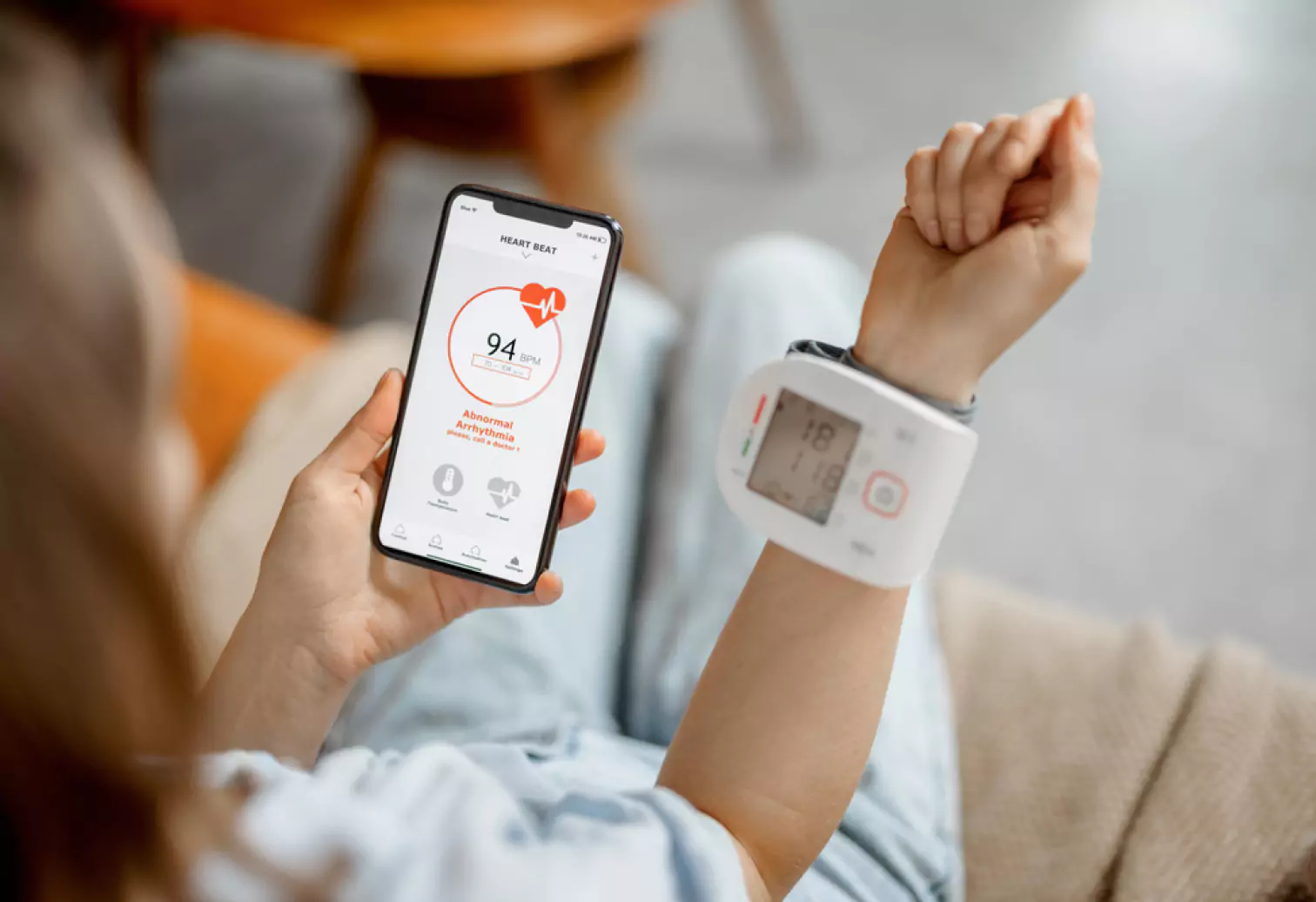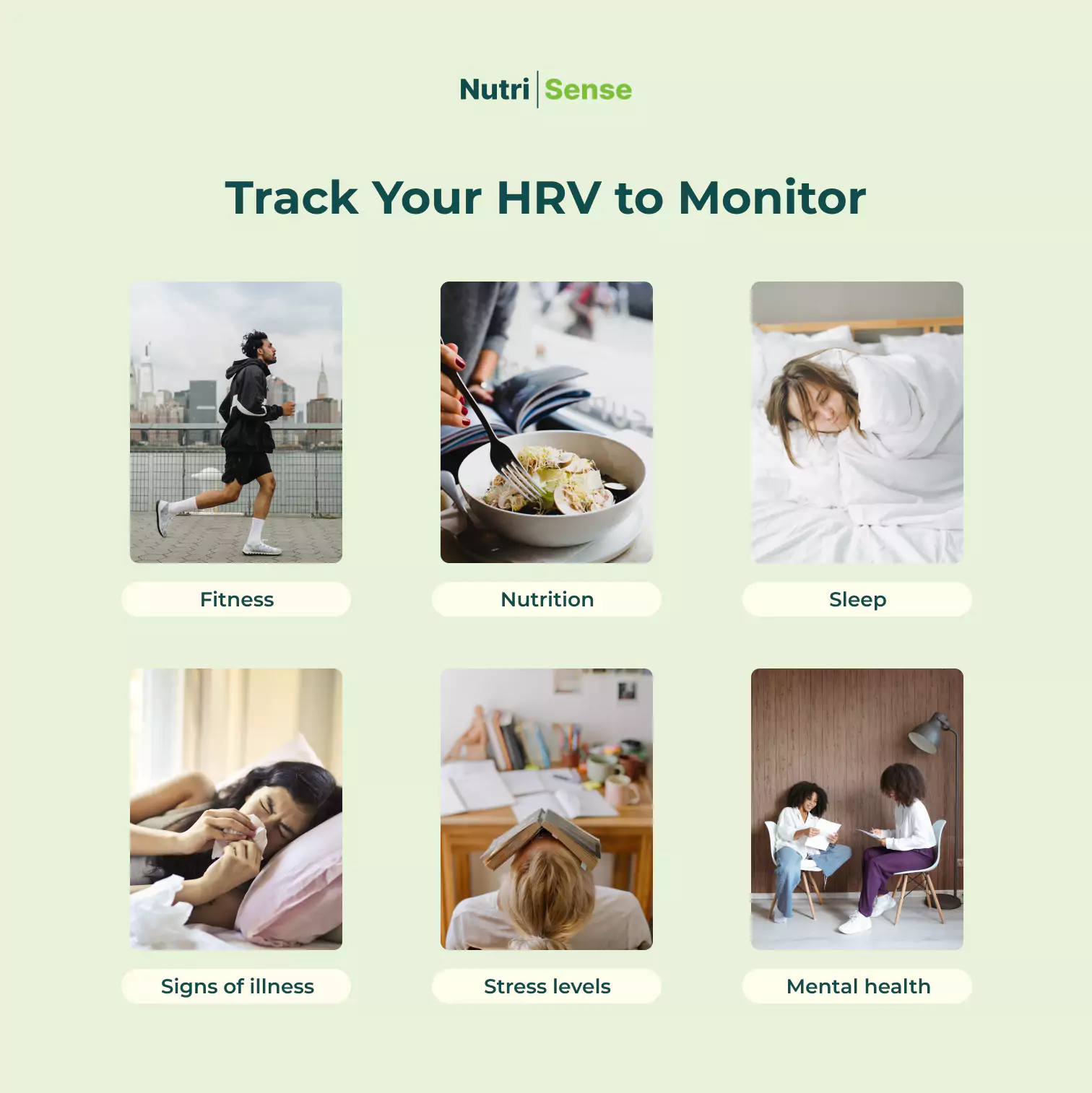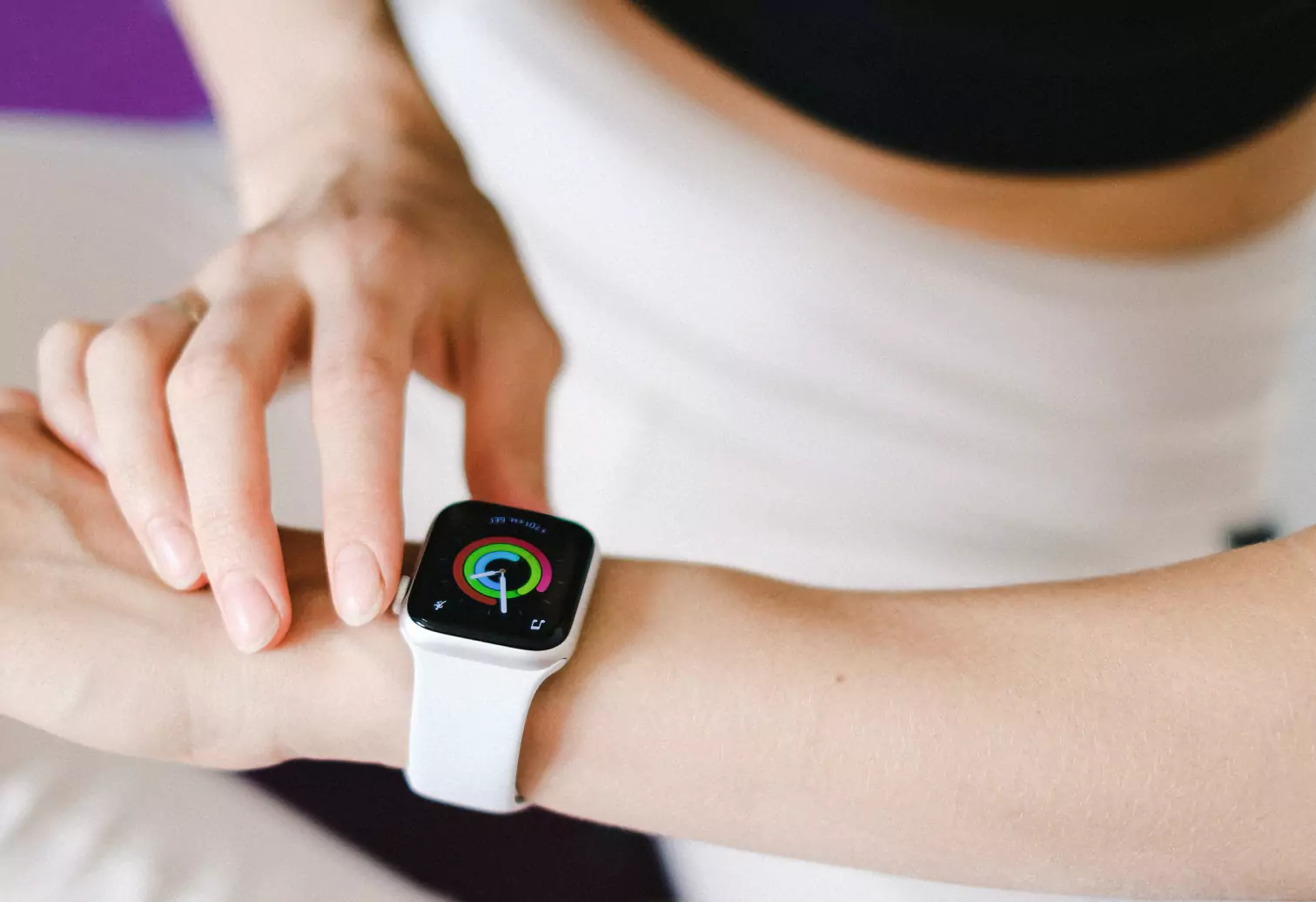A Closer Look at Heart Rate Variability

Key Takeways
Did you know that your heart changes its rhythm every time it beats? You may not be thinking of things like heart rhythm too often, but a healthy heart is vital for overall health. And the variation in time between the beats of your heart, or heart rate variability, is one way to help that.
Measuring your heart rate variability used to be something you did at annual checkups. And thinking about things like heartbeats was once only relevant when you thought of cardiovascular diseases or heart attacks. Now, you can track and monitor various health metrics to ensure overall wellbeing, and HRV is one of them.
Because everyone can benefit from knowing what their HRV is, it’s a good idea to know more about it. Read on to learn more about heart rate variability and how you can improve it.
What is Heart Rate Variability?

There are more ways than ever to check your heart rate. From exercise machines to apps on your phone, you can monitor its speed at any given moment during physical activity, daily chores, sleep, resting periods, and more.
Your heart rate is the number of times your heart beats per minute (bpm). A good resting heartbeat is between 60 to 100 bpm for most adults. And even at 60 bpm, there are small changes between beats that are fractions of a second long.
So, instead of one second between every beat, for example, there will be 0.92 seconds between beats, followed by another 1.13 seconds, and so on. These differences are your heart rate variability.
Since your brain and nervous system are responsible for controlling the heart, it’s not surprising that a part of your nervous system is responsible for controlling these variations. It’s called the autonomic nervous system (ANS), and as the name suggests, it automatically regulates various functions in your system. It’s responsible for your heart rate, blood pressure, digestion, even your breathing patterns.
The autonomic nervous system has two subdivisions:
1) The sympathetic nervous system: This is often colloquially known as your fight-or-flight response and can increase your heart rate.
2) The parasympathetic nervous system: This is your rest and digest response and can lower your heart rate.
You can read more about both types below, but for now, know that this system is what regulates higher HRV or lower HRV as well. It’s essential to know all of this because measuring the range in these fluctuations assesses your heart health and overall wellbeing.
Why Should You Know What Your Heart Rate Variability Is?

Are you still wondering why knowing what your HRV is matters? Heart rate variability is a closer look into how your body can respond to factors like your environment, emotions, and stress.
For healthy individuals, higher HRV is typically a sign that your body is adaptable and ready to react to anything that surprises you. It’s related to your fight or flight response, or parasympathetic nervous system. Sympathetic activity is usually responsible for lower HRV.
While HRV measurements are usually done on your heartbeat, your HRV reflects your nervous system. It’s also a reflection of the balance between sympathetic and parasympathetic activity from the two branches of the autonomic nervous system mentioned above.
The sympathetic or fight or flight response speeds up your heart in order for you to be able to respond to danger by sending blood to your muscles, which in turn limits variability, giving you lower HRV.
The parasympathetic or rest and digest response slows down your heart so you can relax. This sends blood to your internal organs, increasing HRV.
These two systems counter each other, sometimes sending signals simultaneously, which is where controlled breathing (deep and slow breaths) can be helpful. Controlling your breathing can counter your body’s reaction to stress or heightened emotions.
Heart rate variability is a good predictor of heart health, helping you to prevent things like heart attacks and other forms of cardiovascular disease. But it can also give you a better picture of your nutrition, mental health, and stress levels. It can also help track and monitor signs of illness, exercise issues like overtraining, and whether you’re getting enough sleep.

What are the Metrics Used to Measure HRV?

How is heart rate variability measured? Some of the metrics used to measure HRV are called time-domain, frequency domain, and nonlinear. When measuring HRV, the most common and comprehensive time frame is for 24 hours. You can also use beat intervals of up to five minutes, but these are not as accurate and do not give you the complete picture of your HRV.
The metrics can be confusing and are not always important to know every little detail about. But it can benefit you to understand what you’re looking at when you’re trying to monitor your HRV to optimize your health. So, let’s take a quick look at the three primary metrics:
1) Time-Domain: The time-domain metric counts the intervals between heartbeats themselves. There are different classifications of heartbeats and ways to measure the length between them. But the most common time-domain metric is the standard deviation of normal to normal R-R intervals, or SDNN.
2) Frequency Domain: The frequency domain metric is similar to the time-domain metric but focuses on measuring the intervals at specific frequency bands of heartbeats. These frequencies include high frequency (HF), low frequency (LF), very low frequency (VLF), and ultra-low frequency (ULF).
3) Nonlinear: The nonlinear metric is a more abstract range of measurements that looks at patterns to assess regularity and complexity. These different metrics are a way to help understand HRV on different scales and can give you warnings before illness or disease, especially relating to your heart and arteries.
Higher HRV is typically a good thing, but remember that ‘high’ and ‘low’ here are relative to each person. Some people have steady HRV scores, and others see scores that change often.
Instead of comparing your HRV to someone else’s, the best way to use this tool is to measure your long-term trends to raise your variability. HRV trends are a way to view and track your HRV over more extended periods and as it changes when you work to improve it or when factors such as stress or depression affect it.
While a 24-hour window can give you a good idea of your HRV, measuring it over weeks or even months will give you a better idea of your health and progress.
How Do You Check Your HRV?

From ECGs to chest strap monitors and apps, there are a few ways to check your HRV. Here's a little more about each one:
- An ECG: The electrocardiogram test, or ECG, measures your HRV through electrical signals via electrodes placed on your chest, arms, and legs. A cardiologist or a doctor will perform this test—it used to be the only way to measure your heart rate variability before apps and monitors came about. It’s still the most comprehensive look into your cardiovascular system and gives the most accurate readings for HRV.
- A Chest Strap Monitor: Wearable tech is all the rage, and chest strap monitors are getting more popular by the day. Like the ECG, they also use electrodes on your chest to measure your HRV, but they let you do so from the comfort of your home! It makes it possible to track things like low heart rate variability trends quicker and is particularly helpful for fitness enthusiasts.
- Applications and Smartwatches: There are a variety of apps that can help you monitor inter-beat intervals and heart rate variability. Some popular ones include Apple Health, Welltory, Whoop, and Elite HRV. These are sometimes less accurate than ECGs and chest straps but are improving as technology evolves and still give you a good window into your HRV.
What is a Good HRV?

Good HRV is unique to everyone, but you typically want high HRV rather than low HRV. Of course, it’s a little more complicated. It’s because lower HRV may indicate some sort of unknown stressor.
If you’re at the beginning of your journey with HRV, all you’ll want to know is how to use it to measure fitness levels and overall wellbeing. So it’s helpful to know a bit about the ranges. Here are some key points to remember:
- HRV is usually measured on a scale from zero to 100 milliseconds when using the time-domain metric.
- ‘Normal’ HRV for most healthy individuals ranges from under 20 to over 200 milliseconds, with natural highs and lows throughout the day and night.
- Among healthy individuals who exercise regularly, 70 milliseconds or higher is considered healthy.
- Among healthy individuals who exercise regularly, between 50 and 70 milliseconds is considered to have compromised health.
- Under 50 milliseconds is thought to increase risk factors for illness and disease among healthy individuals who exercise regularly.
HRV and Blood Glucose

Research on heart rate variability and blood glucose levels is ongoing, but there are some preliminary insights into its relationship. Among people with type 2 diabetes, in particular, meta-analysis shows a decrease in heart rate variability and parasympathetic and sympathetic activity when compared with healthy controls. This decrease could be due to the effects of altered glucose metabolism.
Research among participants between 18 to 74 years of Mexican, Central American, Cuban, Dominican, Puerto Rican, South American, and other heritage groups (without diabetes) also shows a link between impaired glucose homeostasis and lower HRV.
While the research may be new, the relationship between HRV and glucose is one to keep an eye on in the future. Monitoring both simultaneously may be an effective (and non-invasive!) tool to paint a fuller picture of metabolic health.
HRV and Fitness

If you have low HRV, it can sometimes be because you’re getting lots of exercise. Or, your sympathetic or fight or flight response is in the driver’s seat. It's not always a bad thing, especially regarding your fitness routine.
After all, you want one side to dominate the other when you’re training for a marathon or participating in any other competitive athletic activity. At other times, it’s not so good—it can signal an issue like overtraining.
But if you’re not getting enough physical activity, low HRV may indicate your body is working too hard because of another issue. It can be fatigue, dehydration, stress, or sickness.
A high HRV can sometimes indicate balance (remember, there’s no one-size-fits-all here) between your sympathetic and parasympathetic nervous systems. So even though it may seem like you want to focus on low HRV when you’re engaged in physical activity, you want to aim for a good overall balance.
A common use for HRV is to assess your resting heart rate after intense training. When you train intensely for an extended period, your HRV will drop from its baseline amount. After a few days of rest and recovery, your HRV will increase past the rate you started at, showing improvement. It can be valuable to measure your HRV before beginning a new exercise routine. Over time, exercise allows your nervous system to adapt and recover more quickly to stressors.
HRV and Your Diet

Your HRV is also affected by your diet—simply put, poor nutrition will lower your HRV. Eating whole foods will help raise your HRV and equip your body to function better.
Eating on a regular schedule synced to your circadian rhythm also helps raise your HRV since your body knows what to expect and when to expect it. Eating at unanticipated times will lower your HRV. The same goes for sleep, so having a predictable schedule will help your HRV.
What Affects HRV?

Your heart rate variability can fluctuate for many reasons apart from the interactions between blood glucose, fitness levels, and diet. Take a look at some other factors that influence and impact your HRV levels:
- Lifestyle: Lifestyle and environmental factors including stress, seasonal changes, a poor diet, excessive alcohol consumption, and smoking can affect your HRV levels.
- Inflammation: An increase in inflammation can lower your heart rate variability and put you at a higher risk of cardiovascular disease and heart failure.
- Illnesses: Medical conditions like anxiety, asthma, depression, heart disease, diabetes, and high blood pressure can significantly lower your HRV.
- Age: Did you know that your heart rate can change as you age? Aging can reduce your autonomic nervous system’s response to external and environmental stimuli, lowering your HRV.
- Gender: There may be some relation between gender and heart rate variability, as some experimental evidence suggests women have higher heart rates than men.
- Medication: Prescriptions that regulate your heart, such as beta-blockers, can impact your HRV.
- Menstrual Cycles: Your menstrual cycle can affect HRV too. It experiences high and low fluctuations through the various phases of your cycle.
- Stress: Heart rate variability can detect stress levels, which can also be affected by them. Factors like anxiety can also impact them.
- Sleep Routines: Sleep deprivation and unhealthy sleeping habits can affect everything from blood glucose to mental health. And they affect your heart rate variability too. More specifically, research has found links between sleep deprivation and inhibited vagal modulations to the heart.
Can You Improve Your HRV?

There’s no one-size-fits-all for HRV, so improving your range should not be at the top of your list if you’re just getting started. First, learn how to monitor and track it. It’s a good idea to ask a healthcare professional to help you learn more about what a normal range looks like for you and how to understand and work with the metrics.
In the meantime, here are some methods that can raise HRV that will also help with overall wellbeing:
- Reduce Stress: Lowering stress levels isn’t just good for your HRV. It can help your glucose levels, mental health, and overall wellbeing. Practice meditation, start a gratitude journal, breathe deeply and slowly, spend time with friends and family, listen to music, get a massage, or spend time in the sun.
- Exercise Regularly: Like stress, a good exercise routine can help improve your physical, mental, and emotional wellbeing. Regular physical activity and maintaining a healthy weight can also reduce your risk of various illnesses and help your HRV.
- Eat Better: A balanced diet can help HRV. Focus on getting enough nutrient-dense foods into your meals, increase your protein intake, eat more whole foods, and hydrate properly. Minimize excessive alcohol consumption, reduce your intake of added sugars and refined carbs, and avoid trans fat and excess fructose. Remember that there’s no one-size-fits-all, and a balanced diet means different things for everyone.
- Get Better Sleep: Good sleep routines can help various things, including your cardiovascular health. Incorporating a routine that allows for a good circadian rhythm can also help raise your HRV.
- Try Cold Therapy: While alternative treatments like cryotherapy may not work for everyone, research shows that whole-body cryotherapy may help raise HRV for some.
Find the right Nutrisense programto turn insight into progress.
Go Beyond Glucose Data with Nutrisense
Your glucose can significantly impact how your body feels and functions. That’s why stable levels are an important factor in supporting overall wellbeing. But viewing glucose isn't enough. Nutrisense, you’ll be able to learn how to use your body's data to make informed lifestyle choices that support healthy living.
One-to-one coaching
Sign up to access insurance-covered video calls to work with a glucose expert: a personal registered dietitian or certified nutritionist who will help tailor your lifestyle and diet to your goals.
Monitor and measure what matters
With the Nutrisense CGM Program, you can monitor your glucose with health tech like glucose biosensors and continuous glucose monitor (CGM)s, and analyze the trends over time with the Nutrisense App. This will help you make the most informed choices about the foods you consume and their impact on your health.
Find your best fit
Ready to take the first step? Start with our quiz to find the right Nutrisense program to help you take control.

Amanda is a Nutrition Manager and Registered Dietitian, with a Masters in Dietetics from Stephen F. Austin State University. Originally from south GA, she got her undergrad degree from Texas Tech University. She worked at a hospital in Fort Worth, TX, for 4 years as a dietitian, counseling those living with HIV.




